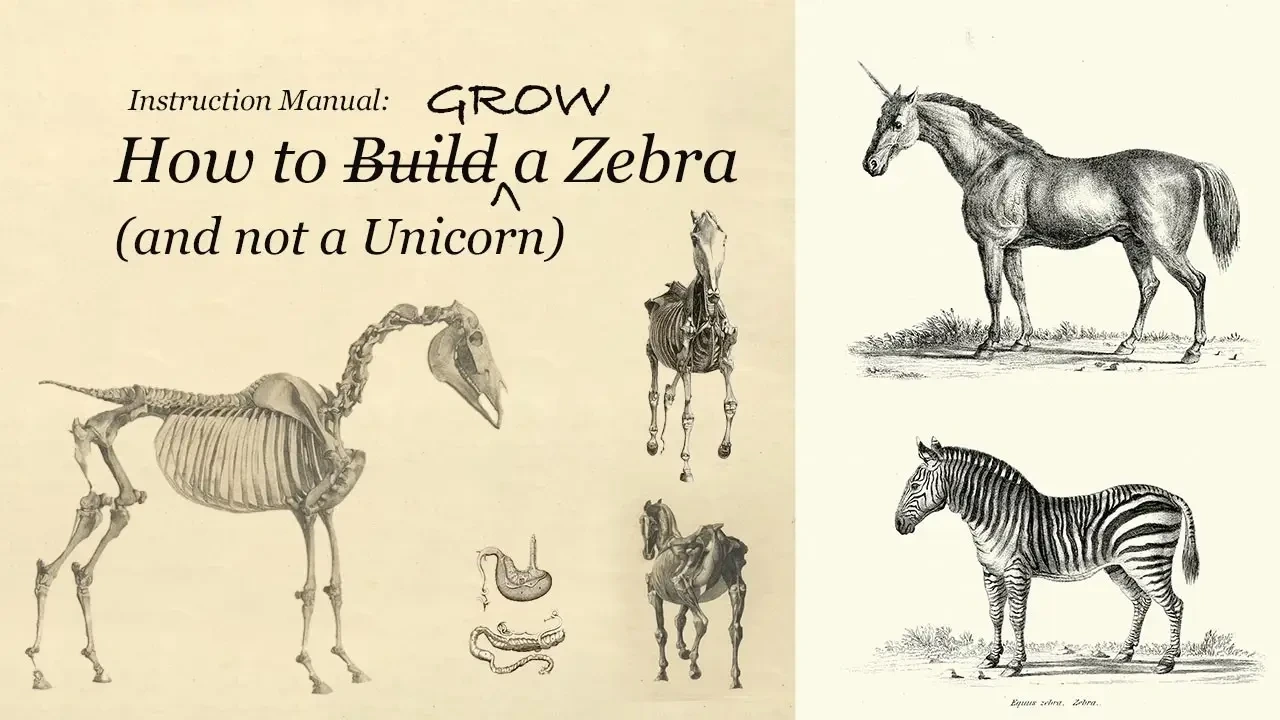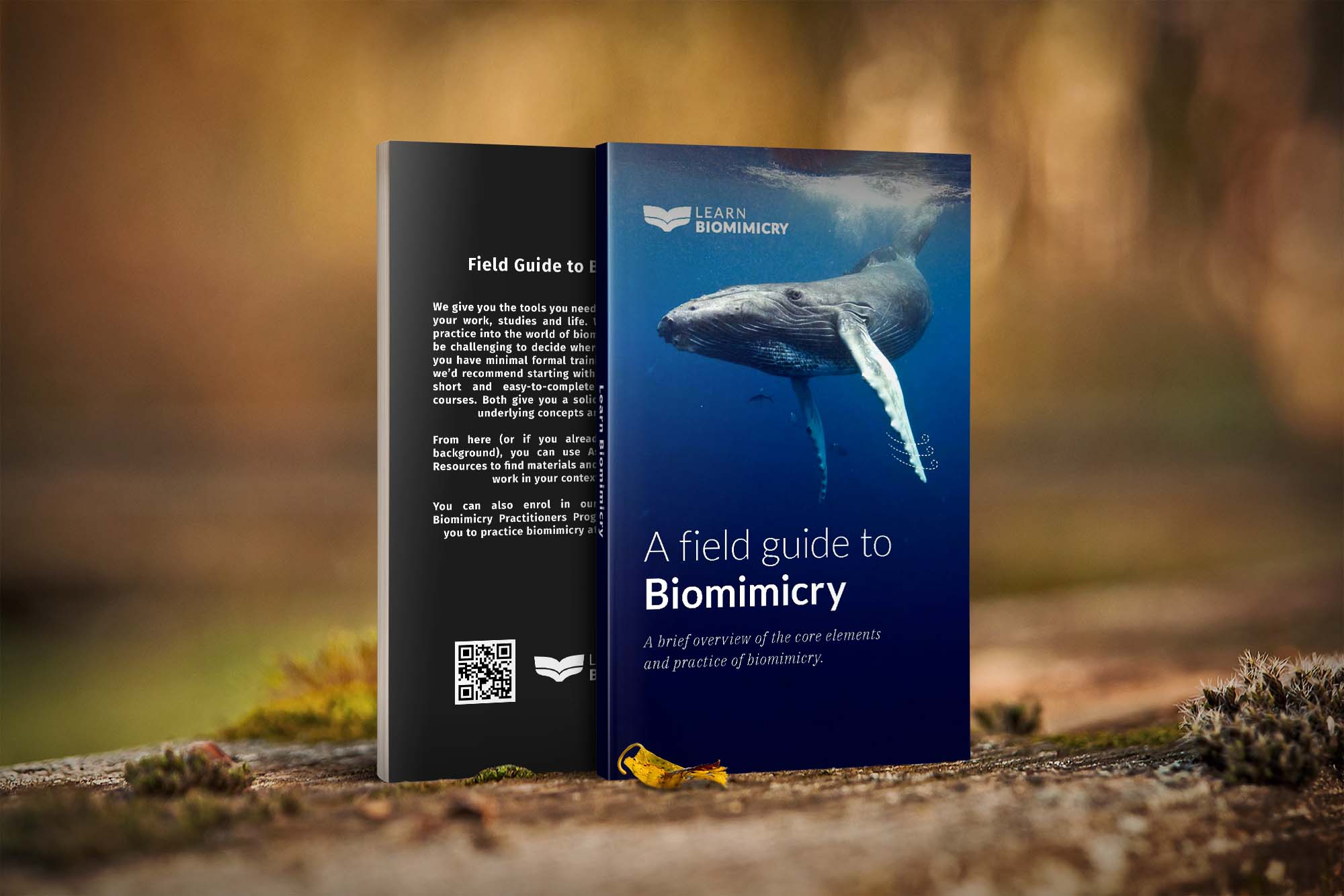Instruction Manual: How to Grow a Zebra (and not a Unicorn)

Who would win in a battle between a unicorn and a zebra? The zebra, for it has so many black belts! With that (stellar) joke out of the way, this article aims to provide you with an instruction manual for growing a Zebra business and share how we’re thinking about it at Learn Biomimicry.
Step 1: Know your species and ecosystem
What is the Zebra business model?
Zebra companies are both black and white: they are profitable and improve society. They won’t sacrifice one for the other. Zebras aim to do both good and make money and does not view these objectives as mutually exclusive.
Can an organisation stand for both strong returns and positive social impact? Ben & Jerry’s, Patagonia, Bloom Institute of Technology (aka Lambda), The Sun Exchange, Warby Parker, Kickstarter, and are a good start. Blending a for-profit model with social improvement creates an epic flywheel effect that’s easy to love, and the world does indeed need many more of these. The growth direction of a Zebra isn’t exponential, but rather regenerative. Additionally, a focus on user success and quality (above quantity) is what makes a Zebra business stand out.
What is the difference between a Zebra and a Unicorn?
A Zebra company adopts an alternative business model to the famed ‘unicorn’ businesses. Unicorns are typically categorized as ‘disruptive’ businesses with high valuations ($1 billion+), mostly playing a zero-sum game for market share, and with a focus on exponential growth at all costs. In contrast, a Zebra company aims for regenerative growth, sustainable profits, and a plurality of outcomes for market players.
Further, and to state the obvious, “unlike unicorns, zebras are real. Zebras are also mutualistic: by banding together in groups they protect and preserve one another. Their individual input results in a stronger collective output. Zebra companies are built [grown] with peerless stamina and capital efficiency” - as long as conditions allow them to create conditions conducive to life (read thrive).
Step 2: Complete your checklist of what's needed

Image Credit: Zebras Unite
Step 3: Build your values
How to grow a Zebra business?
Growing a Zebra company requires identifying and leading with the right values. In our view, the values of a Zebra business model are enabled by following the principles found in nature.

Image credit: Biomimicry 3.8
The Biomimicry Life Principles are design lessons and strategies from nature which have evolved over 3.8 billion years and continue to adapt. What are these?
- Evolve to survive. In late 1999, employees from InterfaceFLOR, were challenged to think about how nature would design a carpet tile. This shift in thinking sparked the pivot to new products – Entropy® and TacTiles™ These biomimicry-inspired products were far more life-friendly – through changes in design and chemistry, they were able to increase the total recycled content of carpet tiles to between 62 and 74%, and eliminate the need for toxic adhesives!. Result: InterfaceFLOR emerged as a major industry leader in sustainable business practices (you can read the full case study here)
- Adapting to changing conditions involves building a multidisciplinary business with diverse employees and clients. Decentralised and autonomous builds in redundancy whilst increasing the resilience of the organisation.
- Be locally attuned and responsive means using readily available materials and energy. The Sun Exchange is a good example of this, whereby anyone around the world can own solar cells in the sunniest places on Earth and take climate action in just a few clicks.
- Life-friendly Chemistry is about “not fouling our nest.” If we are on a finite planet where everything is interconnected, then don’t mess up the place that sustains your life. i.e.) Novobiom is tapping nature’s most powerful recyclers, fungi and microorganisms, for use in brownfields, Superfund sites, and other contaminated industrial lands. By selecting naturally occurring fungi that target specific contaminants such as oil or heavy metals, they perform mycoremediation on-site, without the need for hauling away soil to a central treatment facility. Novobiom has the potential to revitalize millions of contaminated sites around the world by naturally decomposing harmful toxins through this systems-level biomimetic approach.
- Be Resource Efficient is a recognition of low energy processes that can be run on current solar income without the capacity of fossil fuels. This is also about fitting within the limits and boundaries of local context - availability of water, sunlight, nutrients, etc.
- Integrate Development with Growth. Whew, this is a big one. This is the capacity to respond to both growth and development needs in balance - so one doesn’t overshoot the other. It also enables the capacity to cycle materials continuously and adapt to change. It encompasses the capacity for self-organising emergence rather than top-down control. This overarching principle can be viewed as a fulcrum that enables most of the others.
However, being led by Biomimicry’s Life’s Principles and nature’s values doesn’t make you a saint. Nature is not perfect, nor does it pretend to be. Sometimes things fail, but nature adapts and evolves to survive, replicating strategies that work, and discarding those that don’t. Be warned though that these principles do involve making business sacrifices, and are contained in the limits of the earth's operating conditions (a discussion for another article).
Step 4: Iterate, collaborate and learn from others
How we (as Learn Biomimicry) are building
Learn Biomimicry is not building a machine, we’re growing an organism. Today we’re building a zebra, but in a decade we could evolve into something completely different! We aim to enable those we work with to consistently create conditions conducive to life. Through replicating strategies that work and discarding those that don’t, Learn Biomimicry shall evolve to survive (and thrive).
“The future is to be created, not predicted”
- said in 1963 by Dennis Gabor, Nobel laureate for his invention of the holograph
The future of business involves thinking outside (of the box). The world does not need business as usual. The climate and ecological anxiety you and I feel today ask us to rethink humanity's approach - to how humanity shows up and how we do business. Our global challenges cannot be solved with the same paradigm of thinking that created them. They also cannot be solved by waiting for other individuals or philanthropic organizations to do it. The task has been delegated to us!
The businesses of today need a change of perspective, a new model - why not use nature? Why not consider biomimicry? By looking to nature for inspiration, thousands of individuals and organizations around the world are redefining the way that humanity thinks, designs and does business – to be more resilient, adaptive and regenerative.
For us at Learn Biomimicry business is about valuing nature in a whole new way. It’s business unusual for us, we’re different (and that’s okay). Learn Biomimicry aims to enable nature-inspired people to create conditions conducive to a flourishing life. We’re distributed (not remote) and seek to make biomimicry applicable, affordable and accessible.
Thanks for reading.
Alistair Daynes
Managing Director of Learn Biomimicry
PS - Before you go here is a free ebook to start your Biomimicry learning journey

Still curious? Have you ever asked: What is biomimicry?
Research credit: Zebras fix what unicorns break — the introductory article written by the founders of the Zebras Unite movement
